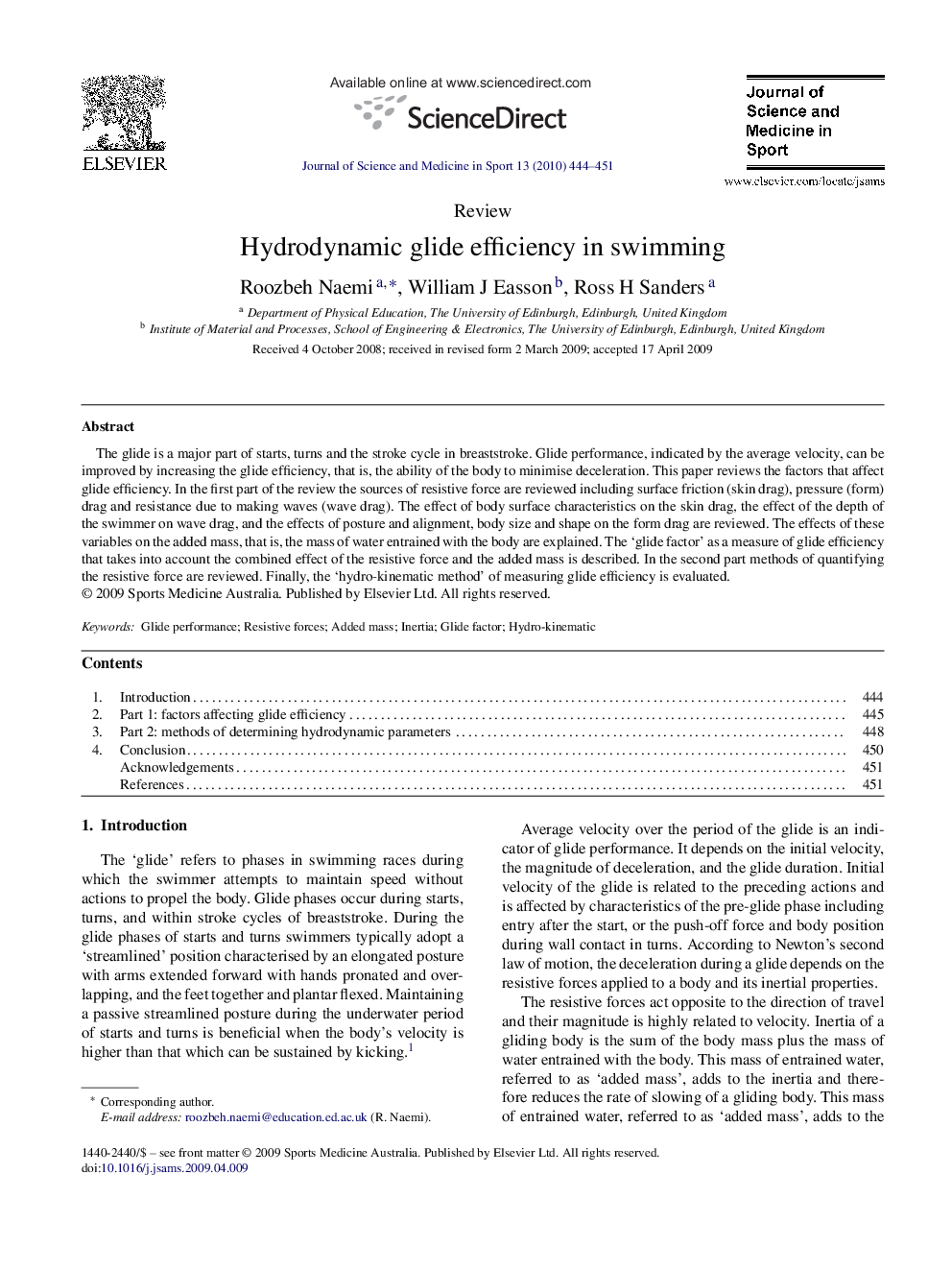| Article ID | Journal | Published Year | Pages | File Type |
|---|---|---|---|---|
| 2701703 | Journal of Science and Medicine in Sport | 2010 | 8 Pages |
The glide is a major part of starts, turns and the stroke cycle in breaststroke. Glide performance, indicated by the average velocity, can be improved by increasing the glide efficiency, that is, the ability of the body to minimise deceleration. This paper reviews the factors that affect glide efficiency. In the first part of the review the sources of resistive force are reviewed including surface friction (skin drag), pressure (form) drag and resistance due to making waves (wave drag). The effect of body surface characteristics on the skin drag, the effect of the depth of the swimmer on wave drag, and the effects of posture and alignment, body size and shape on the form drag are reviewed. The effects of these variables on the added mass, that is, the mass of water entrained with the body are explained. The ‘glide factor’ as a measure of glide efficiency that takes into account the combined effect of the resistive force and the added mass is described. In the second part methods of quantifying the resistive force are reviewed. Finally, the ‘hydro-kinematic method’ of measuring glide efficiency is evaluated.
